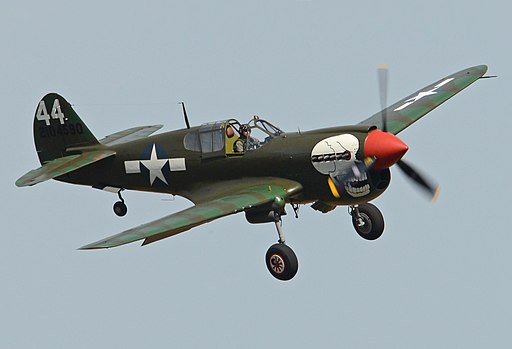The turbulent skies of World War II saw countless dogfights that played pivotal roles in the war’s outcome. Among the many skilled pilots from that time, 1st Lt. Ploetz is mainly remembered for his sharp strategic thinking, exceptional flying skills, and undeniable bravery. We’ll dive further into one particular encounter where Lt. Ploetz’s prowess led to a significant victory against a formidable Japanese fighter.
At the outset, it’s crucial to acknowledge that the aerial combat scene during World War II was characterized by rapidly evolving technology, where the pilots had to be as adept in handling their machines as they were in understanding and countering the tactics of their adversaries. Lt. Ploetz devised and executed strategies that became legendary in this maelstrom of bullets, smoke, and roaring engines.
In the referenced battle, Lt. Ploetz was initially outnumbered and, to the untrained eye, seemingly outflanked. The Japanese fighter had positioned itself at a higher altitude, a tactic known as ‘bouncing,’ which provided the adversary a kinetic advantage for a diving attack. This position also allowed the Japanese pilot a clearer view of the battlefield, potentially granting the first shot. This seemed like an insurmountable advantage to many, but Ploetz was not to be easily deterred.
The dance of death followed, where every maneuver bore significant consequences. Ploetz executed what aviation experts often call a ‘Split-S,’ an aggressive move that involves rolling the aircraft inverted and then pulling back on the stick, making the plane descend in a half loop, reversing its direction. This move is risky due to the potential loss of altitude and speed, but when executed with precision, it becomes a sudden and unpredictable change in tactics.
The Japanese pilot, perhaps expecting Ploetz to ascend or engage directly, found himself momentarily perplexed. In the seconds that followed, Ploetz initiated a series of barrel rolls, not just to evade potential gunfire but also to position himself behind his adversary. The move required an intense understanding of the aircraft’s limitations, a split-second decision-making ability, and a masterful handling of the controls.
With the enemy now in his sights and the tables dramatically turned, Lt. Ploetz seized the moment. Utilizing the momentary disarray of his opponent, he made his move and, with a concentrated burst of gunfire, incapacitated the Japanese fighter.
This confrontation not only solidified Ploetz’s position as one of the finest pilots of his generation but also showcased the importance of tactical adaptability in aerial combat. His maneuvers exemplified the blend of raw skill, a deep understanding of aerial physics, and the intuitive sense of one’s adversary’s intentions.
While World War II history is filled with tales of courage, strategy, and might, Lt. Ploetz’s aerial victory stands as a testament to the art of dogfighting. It’s a vivid reminder that in the vast theatre of war, the nuances of individual confrontations can sometimes shape the larger narrative.
For more insights into the P-40 Warhawk and other important military aircraft, visit Aces In Action. Here, you’ll find an amazing piece of artwork by Craig Tinder titled “Guadalcanal Tiger,” which illustrates a profile of the P-40 Warhawk flown by Lt. Ploetz.
Guadalcanal Tiger P-40 Warhawk Aviation Art Print – Profile by Craig Tinder
1st. Lieutenant Frederick Ploetz served with the 68th Fighter Squadron, 8th Fighter Group in the Southwest Pacific Theater of Operations during WWII. P-39 Aircobras and P-40 Warhawks from the 68th Fighter Squadron had been flying patrols in the Tongan Islands before relocating to Guadalcanal.






Share:
Tank Tactics and Strategies: Learning from Wittmann
Bent-Wing Bird: Understanding the Corsair’s Unique Design